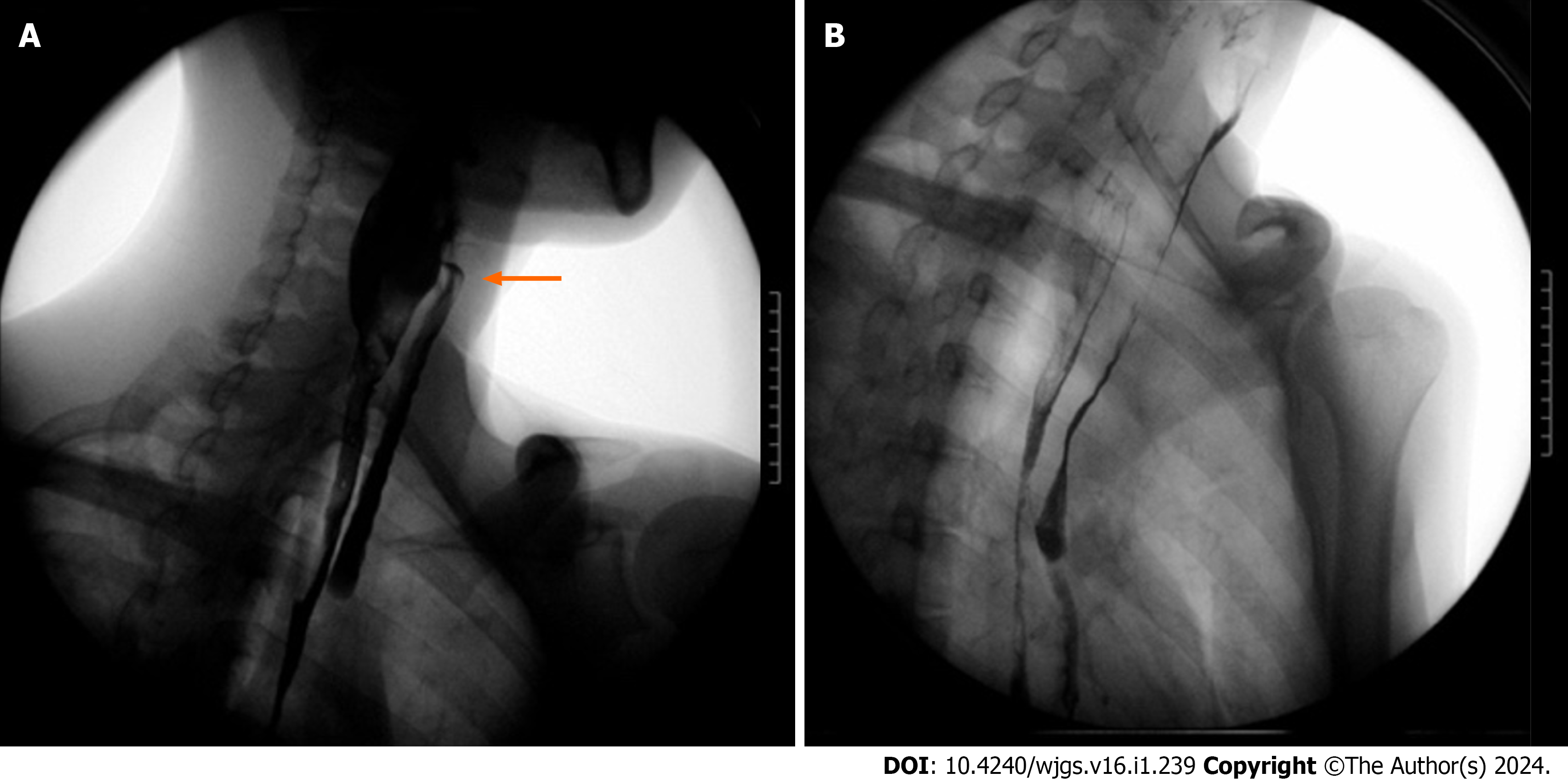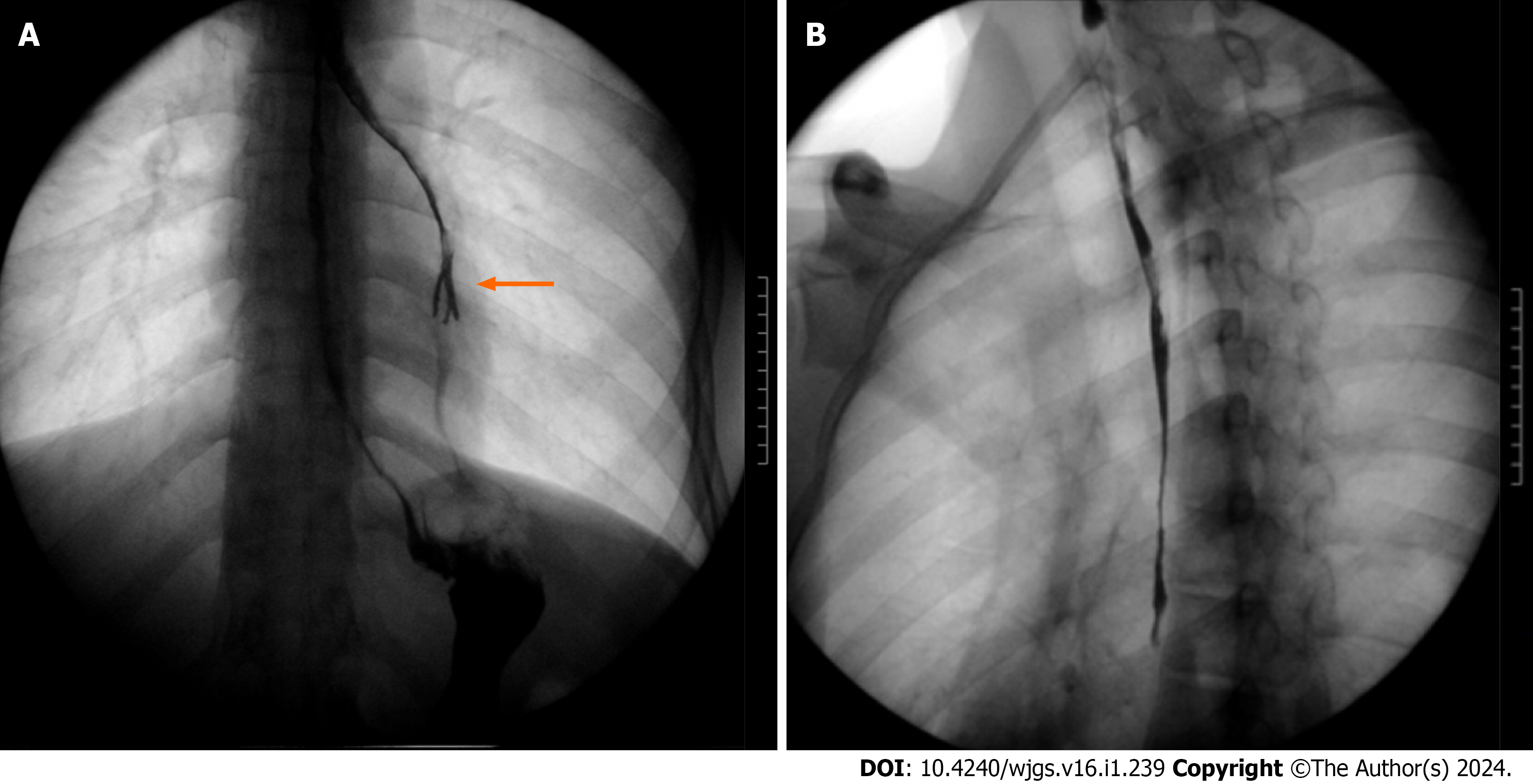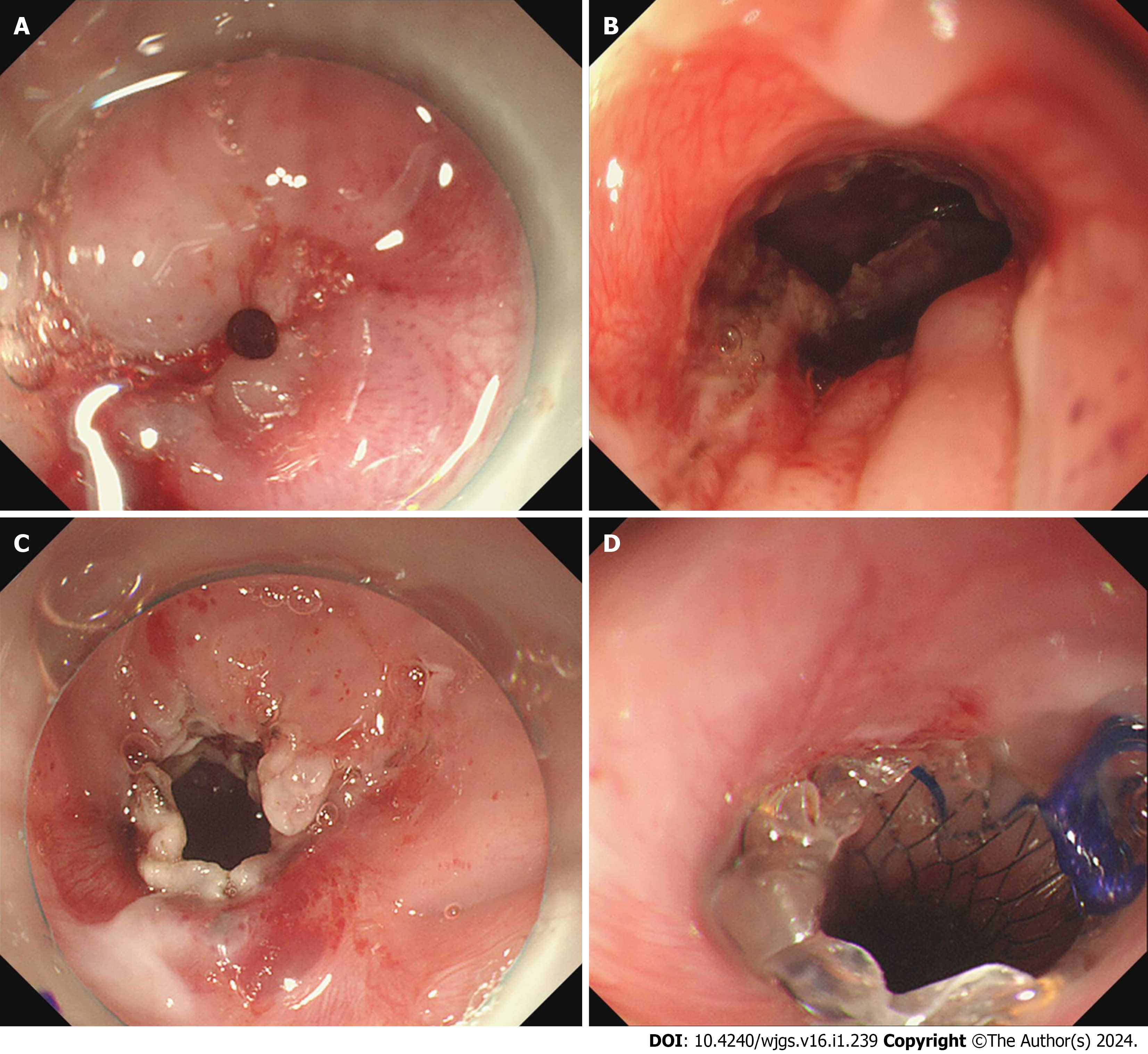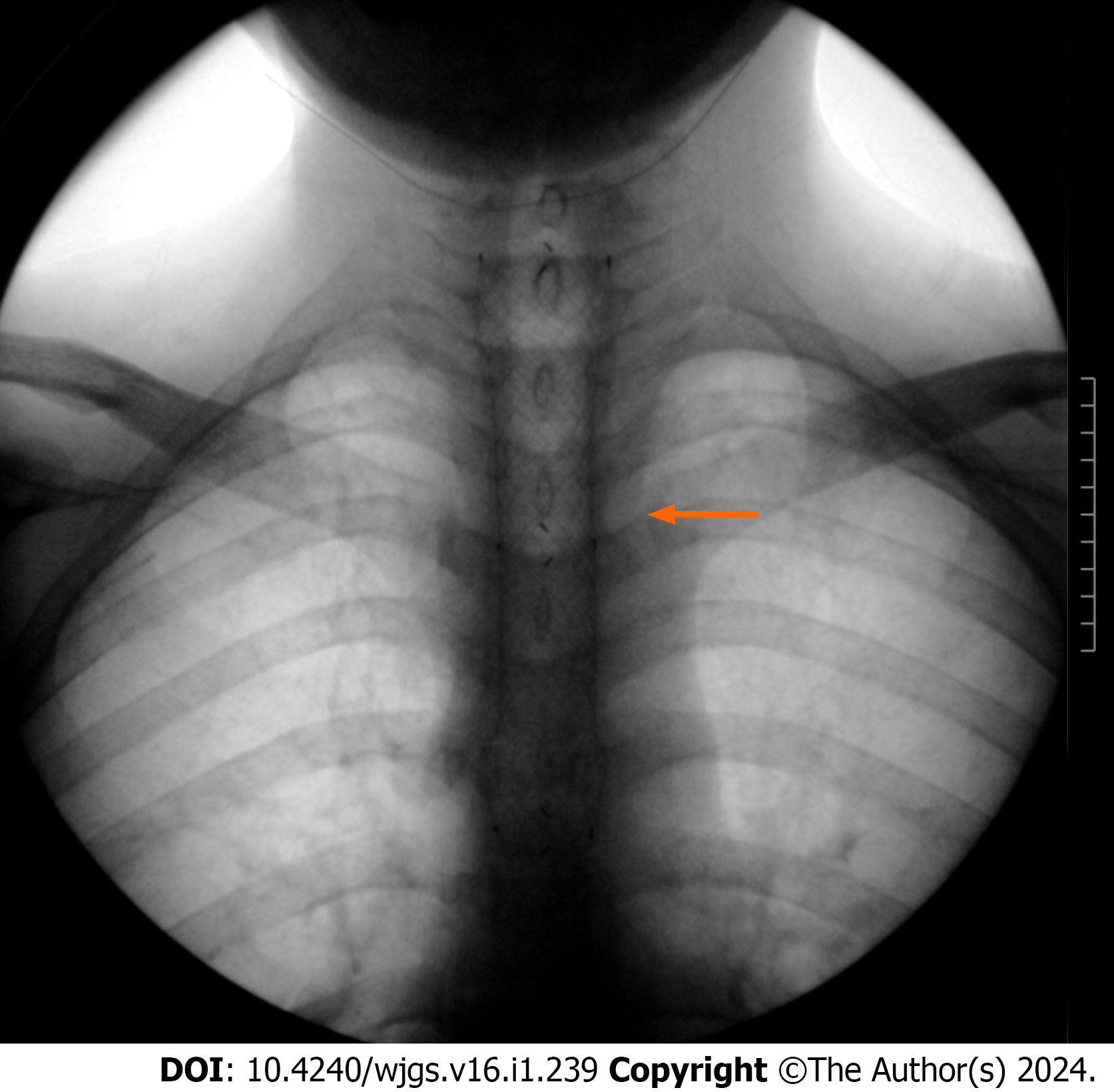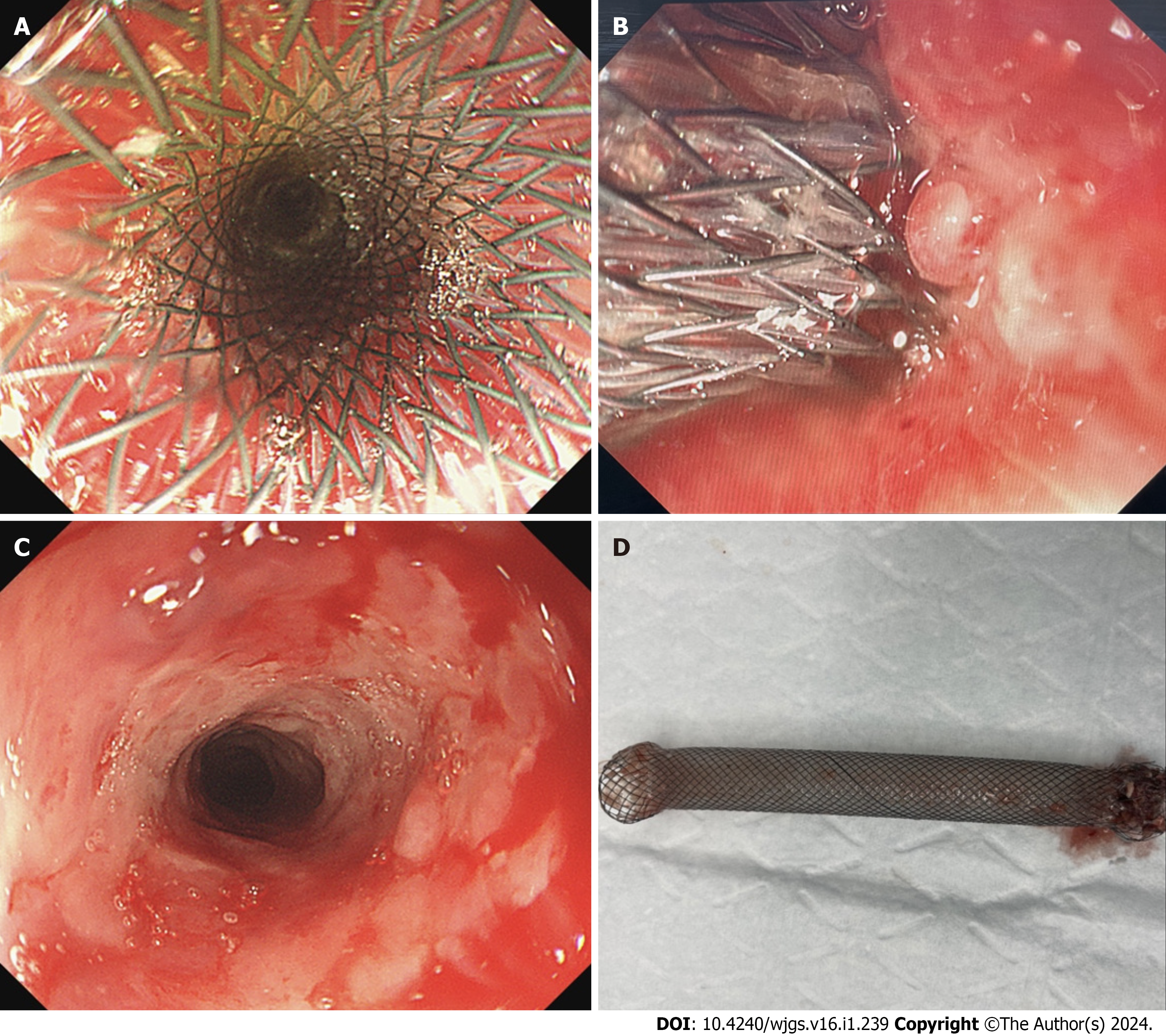Copyright
©The Author(s) 2024.
World J Gastrointest Surg. Jan 27, 2024; 16(1): 239-247
Published online Jan 27, 2024. doi: 10.4240/wjgs.v16.i1.239
Published online Jan 27, 2024. doi: 10.4240/wjgs.v16.i1.239
Figure 1 Treatment timeline.
ATT: Antituberculosis therapy; CT: Computed tomography; CES: Corrosive esophageal stenosis; EBD: Endoscopic balloon dilation; EIM: Endoscopic incision method; ESP: Esophageal stent placement; ETF: Esophagotracheal fistula; UGI: Upper gastrointestinal imaging.
Figure 2 Upper gastrointestinal imaging showed corrosive esophageal stenosis and pharyngeal fistula.
A: Upper gastrointestinal imaging (UGI) indicated that the patient had a pharyngeal fistula (yellow arrow); B: UGI indicated that the patient had total esophageal stenosis.
Figure 3 Upper gastrointestinal imaging at admission.
A: Upper gastrointestinal imaging (UGI) indicated that the patient had an esophagotracheal fistula (yellow arrow); B: UGI indicated that the patient had total esophageal stenosis.
Figure 4 The endoscopic incision method and esophageal stent placement performed at admission.
A: The esophageal stenosis part which made the endoscope unable to enter; B: There were fistulas in the patient's esophagus; C: The esophageal lumen increased significantly after treatment by the endoscopic incision method; D: The upper end of the stent after placement.
Figure 5 After esophageal stent placement, the stent was in place and esophageal dilation was good.
Figure 6 The stent was removed finally.
A: The stent was in place; B: The stent was being removed; C: After the stent was removed, the esophageal cavity expanded significantly; D: The removed stent.
Figure 7 The fistula was blocked, but the esophagus was partially narrow.
A: There was no esophagotracheal fistula; B: The esophagus was partially narrow.
- Citation: Fang JH, Li WM, He CH, Wu JL, Guo Y, Lai ZC, Li GD. Endoscopic treatment of extreme esophageal stenosis complicated with esophagotracheal fistula: A case report. World J Gastrointest Surg 2024; 16(1): 239-247
- URL: https://www.wjgnet.com/1948-9366/full/v16/i1/239.htm
- DOI: https://dx.doi.org/10.4240/wjgs.v16.i1.239










